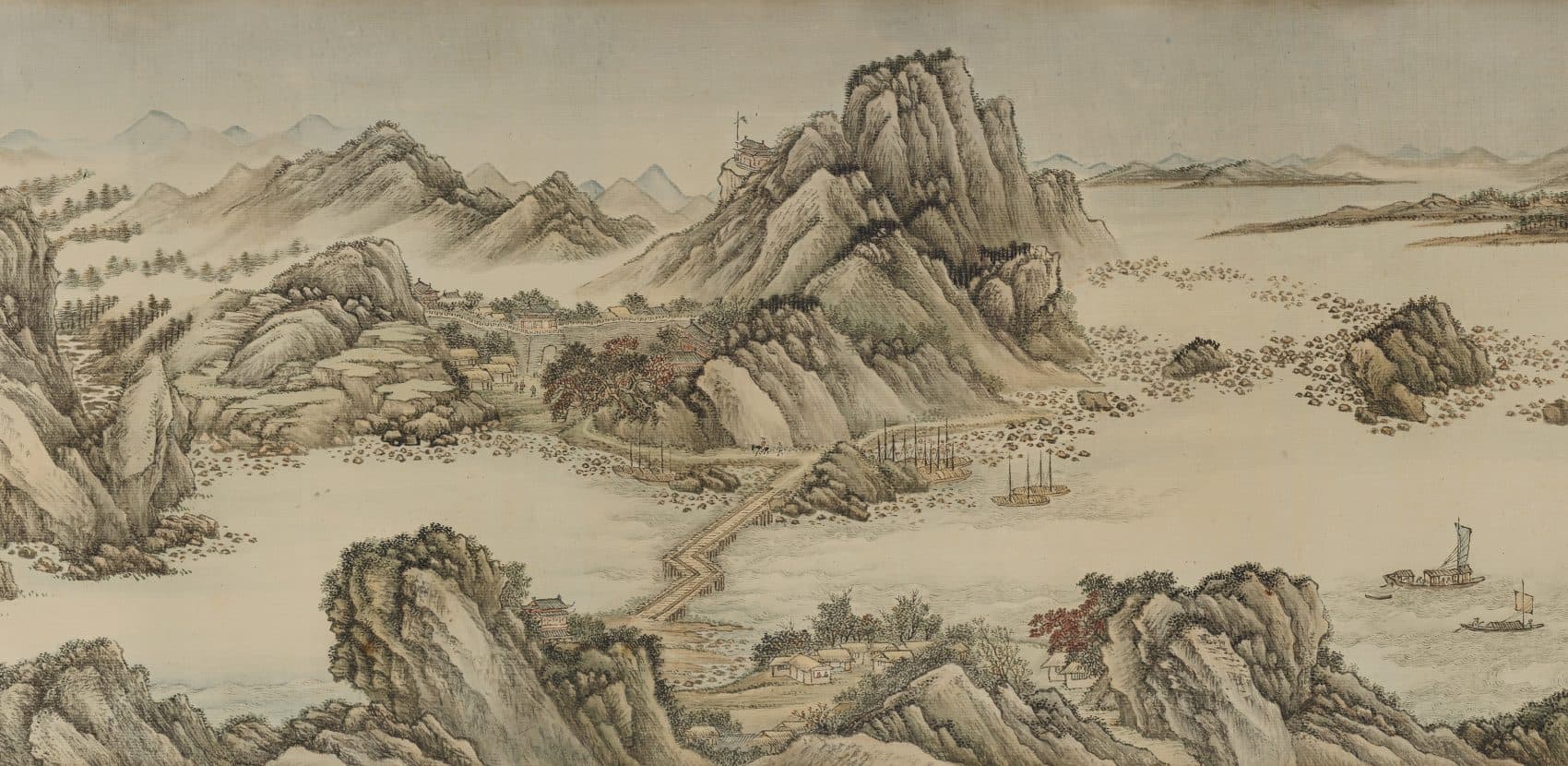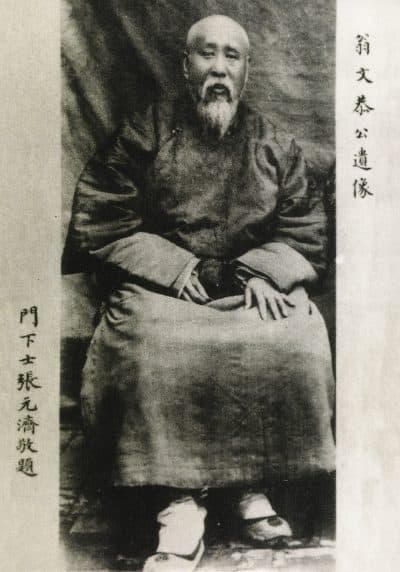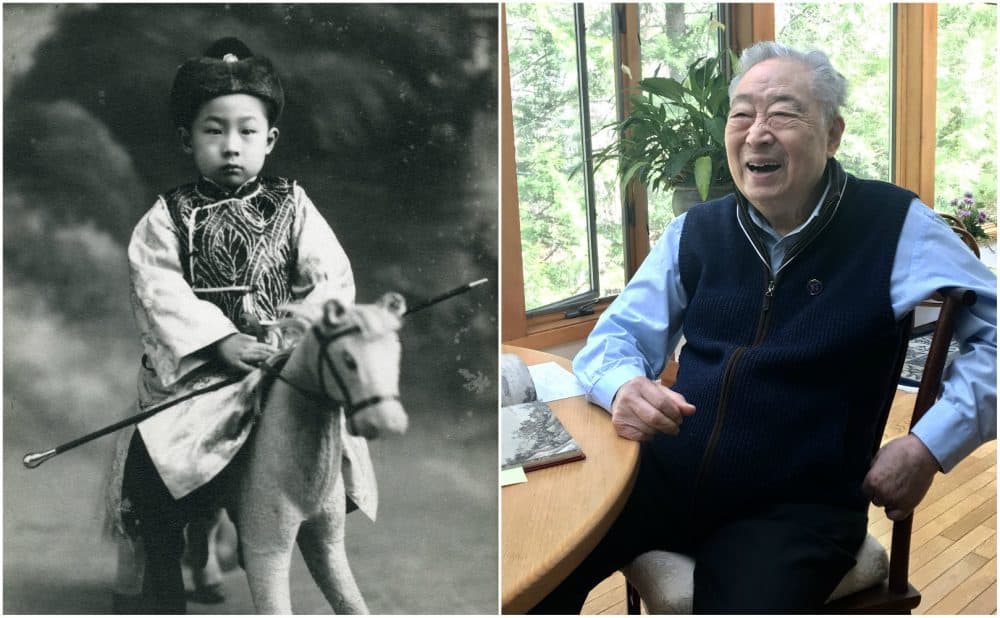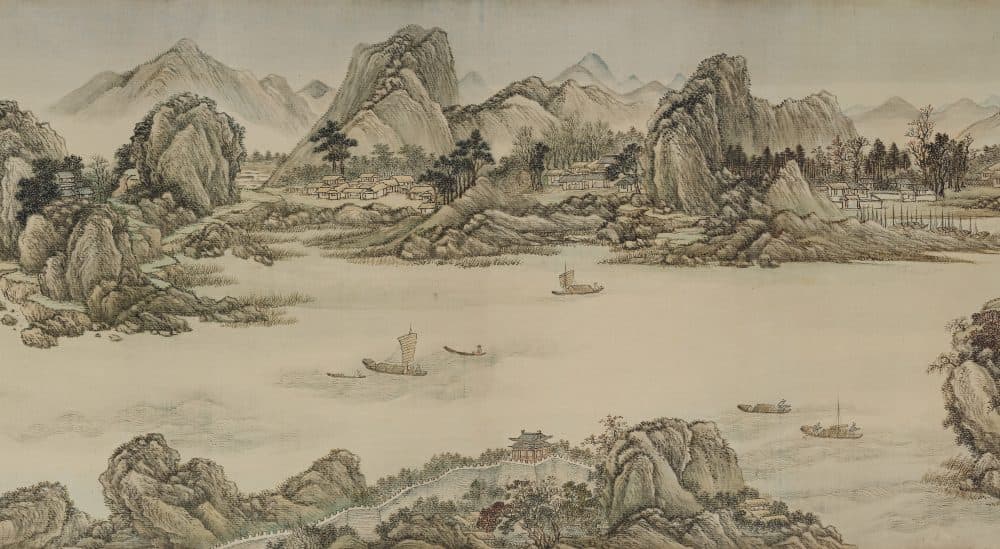Advertisement
For His 100th Birthday, A Collector Gives The MFA A 17th Century Chinese Scroll

A prominent art collector is turning 100 on Saturday. But instead of getting a gift, he's giving one to Boston's Museum of Fine Arts.
It’s a painstakingly-crafted, 17th-century landscape painting titled "10,000 Miles Along The Yangzi River." In it, influential Chinese artist Wang Hui captures the relationship between the natural world and humanity on Asia's longest river.
The piece has been in collector Wan-go H.C. Weng’s family for six generations — and it's had quite a journey.

Back in 1875, Wan-go Weng’s great-great-grandfather was wandering through an antique shop in Beijing when he fell in love with a 53-foot-long handscroll. The ancestor, Weng Tonghe, was a high official in the Chinese government as well a major connoisseur of painting.
“He asked the price and it was far more than he could afford," recounted MFA senior curator of Chinese art Nancy Berliner. “But the dealer must have seen how excited Weng Tonghe was. So a few days later he actually brought the painting over to Weng Tonghe's house for him to look at again.”
Berliner knows this because Weng Tonghe kept a diary detailing his thinking, pondering and worrying about the object of his affection.
“He negotiated back and forth, back and forth with the dealer,” Berliner said. "He had been on the verge of being about to buy a house — but he decided to buy the painting instead. And it was the most cherished painting in his whole collection.”
Berliner said artist Wang Hui felt the work was his greatest achievement. After six years as a court painter for the Kangxi Emperor, he was liberated in 1699 to paint whatever he wanted. He chose Asia’s longest river, and spent seven months laboring over it. For him, it was personal.
“One senses the man behind it,” Berliner said.
In it, the artist captured the rolling landscape and driving waters in and around Asia’s longest river. His expressive brushstrokes — no longer confined by the emperor’s desire for realism — take viewers on a journey past mountains, animals, fishermen, ferries, pavilions, pagodas and villages.
The curator is thrilled to be welcoming the scroll to what will be its new, permanent home at the MFA. It will be on display in the museum's Asian Paintings Gallery through Sept. 30.
"It's an incredibly momentous painting, a momentous topic and a momentous gift to the museum,” Berliner said. She said the gift comes after the museum's long relationship with Wan-go Weng that dates back to 1949.
Wan-go Weng has long been steward to his family’s historic collection, which is considered to be one of the greatest private trove’s of Chinese art in the U.S.

The collector said in a statement that he is honored that the MFA will be the scroll's final home.
“This museum has the oldest Asian art department in the U.S., with a collection that includes celebrated masterpieces of Chinese painting, especially from the Song and Yuan dynasties. Wang Hui’s scroll will complement these works,” he said.
The MFA's collection is strong in early Chinese paintings (from the Song and Yuan periods of the 10th, 11th, 12th and 13th centuries), but is lacking many masterpieces from the Qing dynasty of the 17th, 18th and 19th centuries, according to Berliner.
“This masterpiece by the greatest painter of the Qing dynasty is a transformative addition to our collection," said museum director Matthew Teitelbaum in a statement. "Together with other works in our collection, we are now able to see Wang Hui’s expansive talents across many formats — from monumental hand scrolls to intimate fans — allowing us to explore the full range of the artist’s remarkable abilities.”

Collector Wan-go Weng just published a new book about the scroll’s storied journey that began when the artist painted it in 1699. And even though the artwork that’s been in his family for well-over a century is changing ownership, its wooden holding box will forever bear his great-great-grandfather’s mark. It’s known as a colophon -- or inscription -- that Chinese collectors have traditionally used to express their love of favorite works of art. It reads:
This Yangzi River painting may have a spirit of its own,
Acquiring it helps me forget how poor I feel.
Who would buy a painting instead of a house?
Please forgive me, friend, if I never let it out of my sight!
The 100-year-old Wan-go Weng was compelled to compose his own colophone to the scroll, which is also on display in the gallery.
